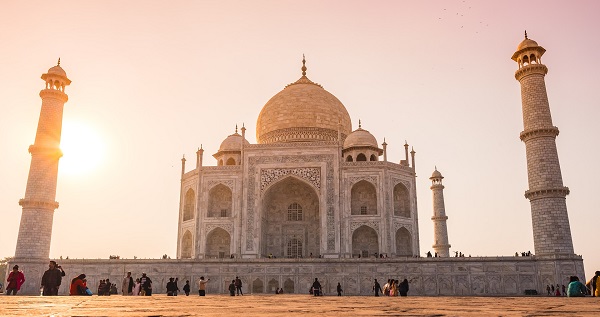Wednesday, July 06, 2022
India - Global manufacturing hub for investors

India enjoytheworld/pixabay.com
With a population of around 1.38 billion, according to the United Nations, India is Asia’s 3rd largest economy and is expected to overtake China as the world’s most populous country by 2027. As per OECD, about 35% of this South Asian nation is under the age of 25.
Significant recovery despite the overcasting conditions
Pandemic lows, supply-chain disruptions and, more recently, inflation have created particularly challenging times for the world's largest democracy. Despite these challenges, the Indian economy is poised to fast-track in the next two years and has been maintaining a sustained recovery with a rebound momentum since the second half of Financial Year (FY) 2020/21 (1st of April until 31st of March). According to the latest estimates of the National Statistical Office (NSO) India’s GDP is likely to grow at 9.2% in FY2021/22.

Source: National Statistics Office, Economic Survey FY 2021-22
Consumer confidence is slowing growing back again and the Indian government is trying to stimulate the economy with large investments in infrastructure. Sector-wise analysis indicates that manufacturing and construction have fared relatively well and have seen a sustained rebound due to a rise in demand and reduced mobility restrictions.
Growth has mainly been driven by robust exports steered by global economic recovery along with domestic private investments as businesses ramped up production to meet local festive demand. Investment has maintained a steady pace of growth, which indicates that the capital expenditure cycle is starting to gain pace.
Economic recovery & inflation
With the economy gradually reeling out of the pandemic’s shadow, showing signs of a steady recovery, private demand is expected to pick up again in the coming few quarters and will likely sustain the growth momentum. This might result in a robust capital-spending cycle with larger asset creation.
However, inflation may spoil consumer sentiment. For FY2021/22, the Reserve Bank of India has projected CPI inflation at 5.3% after considering all factors such as rising raw material prices globally as well as increasing oil prices but inflationary risk stands to overcast continuous economic growth.
Global manufacturing hub for investors
For FY 2020/21, the Indian government estimates that the country registered a new high, of total inward Foreign Direct Investments amounting to US$81.72 billion.
Investment in infrastructure is one area the Indian Government is focusing on. Programmes like the National Infrastructure Pipeline (NIP) are aiming at making opportunities availanble for investors. Another field that got a lot of attention in the recent past ist India’s booming start-up-sector.
The government's flagship programme Make in India was additionally catalyzed when India embarked on a vision of self-reliance under the Atmanirbharta campaign in the pandemic-stricken 2020. Thus, thereby, centering the efforts to make India an attractive destination for FDI in manufacturing and enhance exports, the union government launched subsidy programmes like the production linked incentive (PLI) schemes with an outlay of around US$26 billion.
The PLI schemes have provided impetus to various key sectors such as specialty steel, automobiles/auto components, ACC battery, large-scale electronics manufacturing, pharmaceuticals, medical devices, food products, solar EV modules, textile products etc. The aim is to make India a large manufacturing hub. The production should cater to the Indian market as well as exports.
Specialty steel production linked incentives
Iron & Steel industry, being a core industry, plays a vital role for India’s development in infrastructure. Even though, India currently operates at the lower end of the value chain in steel sector, it is still the 2nd largest producer of steel contributing around 6% to the world steel production. The Indian steel sector has been growing at a CAGR of about 5-6% y-o-y. The government has set a target to ramp up the country's crude steel production output to 300 million tonnes (MT) by 2030 and also seeks to increase the domestic per capita steel consumption to the level of 160 kg by 2030. The objective of the PLI scheme for specialty steel is to promote manufacturing of such steel grades within the country with an incentive outlay of US$ 843 million approx. across 25 product sub-categories. Broadly, the scheme shall apply to five product categories namely: Coated steel ducts, high strength steel, steel / specialty rails, alloy steel products as well as steel wires and electrical steel. The tenure of the scheme is five years with FY 2023/24 as initial year.
It is expected that mostly large companies will benefit from the subsidy. Nevertheless, through trickle-down-effects smaller companies might also gain. In addition, there is a chance for the whole value chain to benefit. With more and better quality steel products available, it becomes easier for manufacturers to source in India.
Contact
Florian Wenke
Director India, Sri Lanka, Maldives
GERMANY TRADE & INVEST
T +91 22 66652 177
M +91 93268 22142
[email protected]
www.gtai.com
